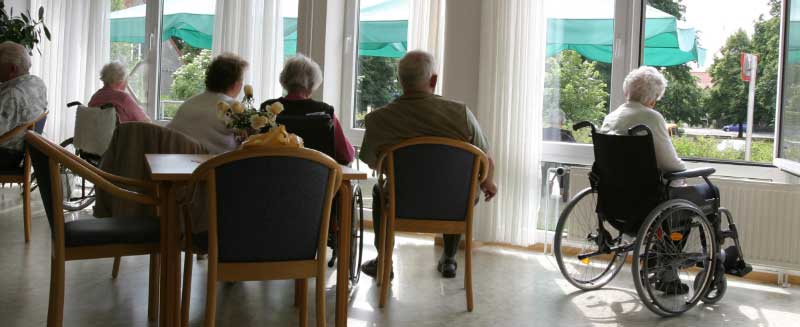Florida Nursing Home Abuse: Bedsores
Part of what sets The Maher Law Firm apart from other law firms is how serious we take the counselor part of our chosen profession. We’re here to provide guidance and information when unfortunate situations arise. In a series of web resources that the Maher Law Firm will be providing, we would like to discuss the unfortunate topic of Florida nursing home negligence and abuse.

Call Us 24 Hours a Day at 407-839-0866 or Fill Out The Form Below to Schedule Your Free Consultation
Here, in the first installment of our Florida Nursing Home Abuse series, Attorney Geoff Moore discusses bedsores: what are they, how do they occur and what to do if a loved one gets them.
Florida Nursing Homes: Finding the Right Fit
Nursing homes, by design, are intended to assist in the care of the sick and elderly. It is very rare that a person seeking nursing home care is in perfect health. So when a nursing home takes on a new resident, that home—and the doctors and nurses working there—are mandated to perform an overall assessment to determine whether or not a person is an adequate fit for that specific facility. Each nursing home, and, of course, each patient, is dramatically different.
If a nursing home takes on a resident, they are making a promise to that resident and to the resident’s family that they have the skills and resources to adequately care for the resident and their underlying conditions. If they cannot adequately care for the potential resident, they have an obligation to turn that resident away.
Not Enough Staff Can Lead to Bedsores
Unfortunately, nursing homes will sometimes take on residents that they cannot adequately care for. And oftentimes, a shortage of staff is the reason residents don’t receive the proper care they have been promised. Sure, not hiring adequate staff saves money for facility; there are less people to pay on a daily basis. But this budget cut can lead to serious and catastrophic injuries for nursing home residents. The worst part—many of these injuries are completely preventable.
When there are not enough staff, one of the most common injuries that can occur for a bedridden resident is a bedsore. Bedsores can range in severity, but the most serious bedsores can lead to illnesses and death. However, in an adequately staffed facility, bedsores are completely preventable by staff turning and repositioning each resident.
What are Bedsores?
Bedsores can happen when a person is bedridden or otherwise immobile, unconscious, or unable to sense pain. Bedsores are ulcers that happen on areas of the skin that are under pressure from lying in bed, sitting in a wheelchair or wearing a cast for a prolonged time. Bedsores are also called pressure injuries, pressure sores, pressure ulcers or decubitus ulcers.
Bedsores can be a serious problem among frail, older adults. They can be related to the quality of care the person receives. If an immobile or bedridden person is not turned, positioned correctly and given good nutrition and skin care, bedsores can develop. People with diabetes, circulation problems and poor nutrition are at higher risk.
What Causes Bedsores?
According to Johns Hopkins Medicine and research done by Maher Law Firm Attorney Geoff Moore: "A bedsore develops when blood supply to the skin is cut off for more than 2 to 3 hours. As the skin dies, the bedsore first starts as a red, painful area, which eventually turns purple. Left untreated, the skin can break open and the area can become infected.”
"A bedsore can become deep and even extend into the muscle and bone. Once a bedsore develops, it is often very slow to heal. Depending on the severity of the bedsore, the person's physical condition, and the presence of other diseases (such as diabetes), bedsores can take days, months or even years to heal. They may need surgery to help the healing process.”
Bedsores can happen throughout the body but are most common on the buttocks area, heels of the feet, shoulder blades, back of the head and backs/sides of the knees. As you can imagine, these are all the areas that hold the most pressure when patients are laying down on their backs.
What are the Symptoms of Bedsores?
Bedsores are divided into 4 stages. According to Johns Hopkins, from least severe to most severe, the stages of bedsores are:
- Stage 1.The area looks red and feels warm to the touch. With darker skin, the area may have a blue or purple tint. The person may also complain that it burns, hurts, or itches.
- Stage 2.The area looks more damaged and may have an open sore, scrape, or blister. The person complains of significant pain and the skin around the wound may be discolored.
- Stage 3. The area has a crater-like appearance due to damage below the skin's surface.
- Stage 4. The area is severely damaged and a large wound is present. Muscles, tendons, bones, and joints can be involved. Infection is a significant risk at this stage.
What to do if your Loved One Experiences Bedsores
Your loved ones should have the care they need to avoid painful and debilitating bedsores. If a family member has developed a bedsore, it is most often a sign of neglect from the facility. Give us a call, we are standing by to hold these facilities accountable for preventable injury.


